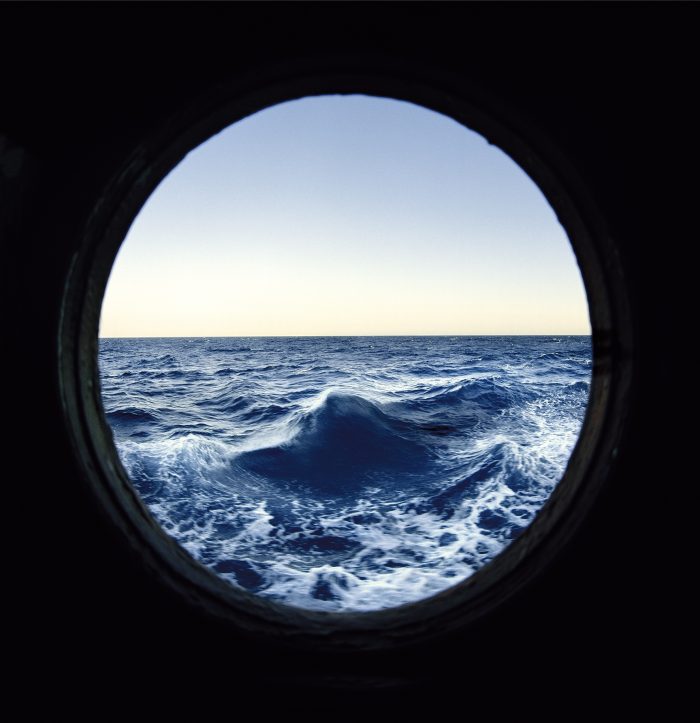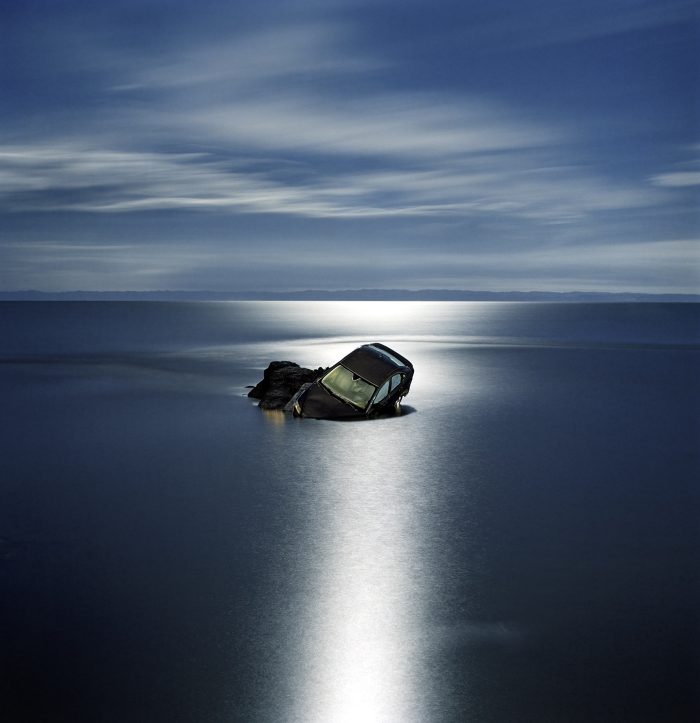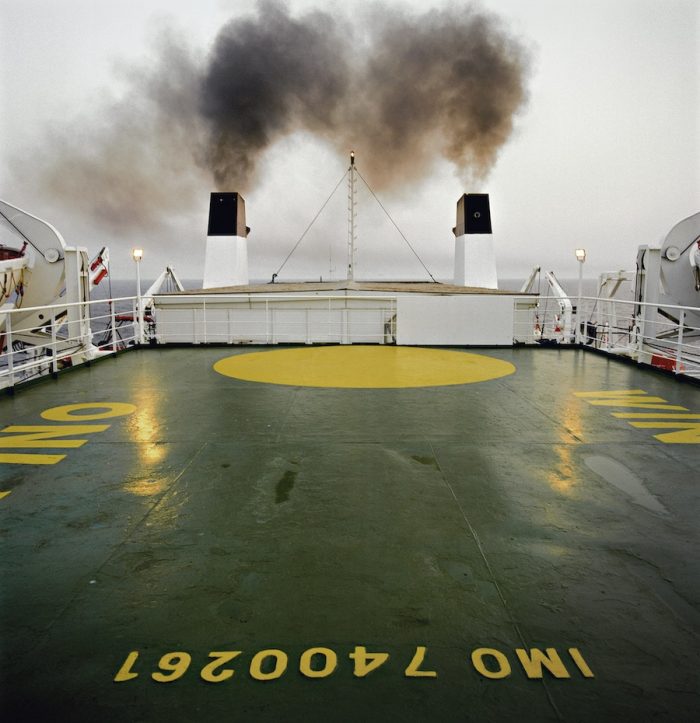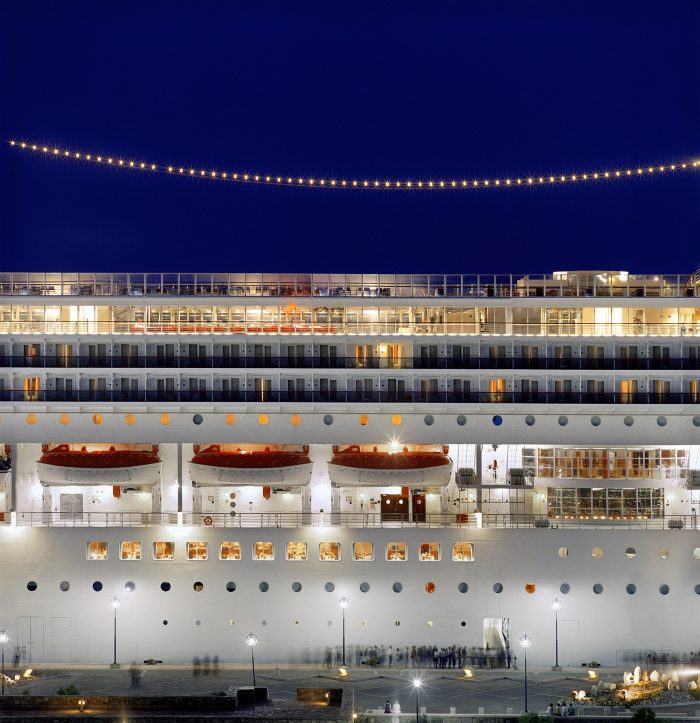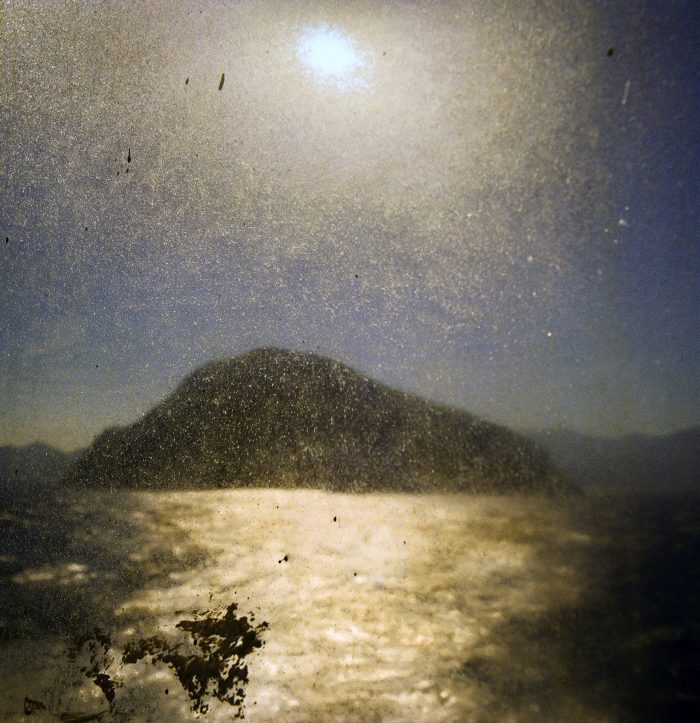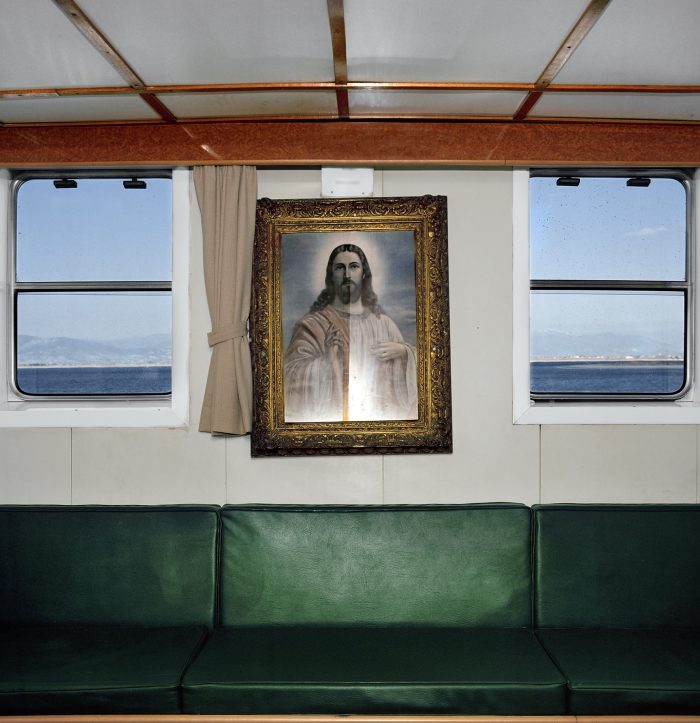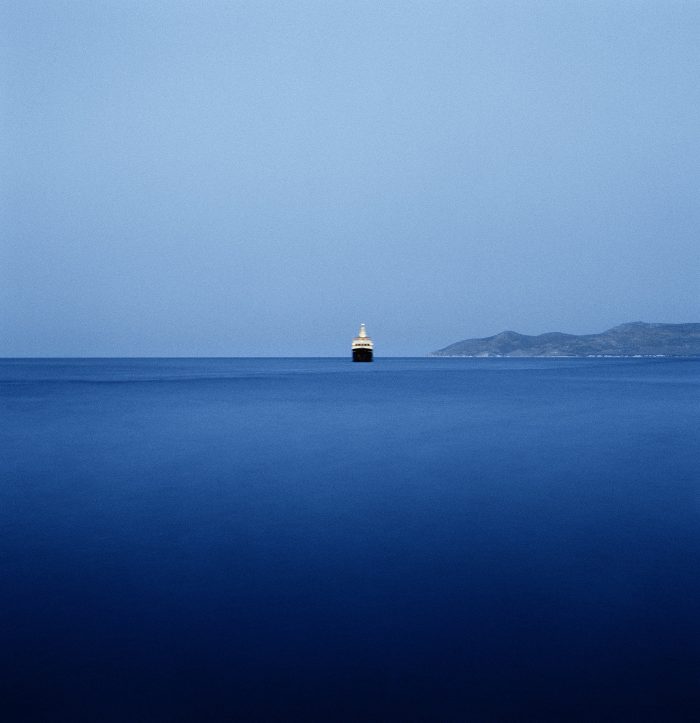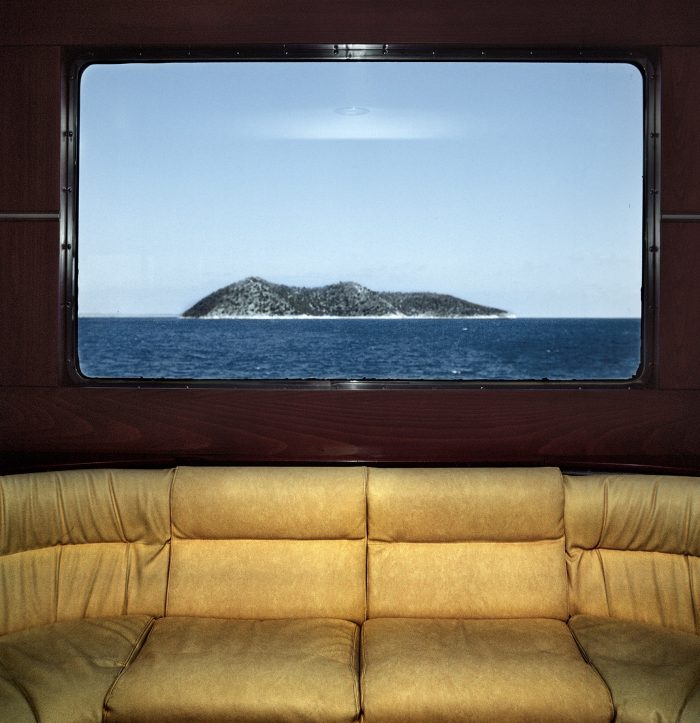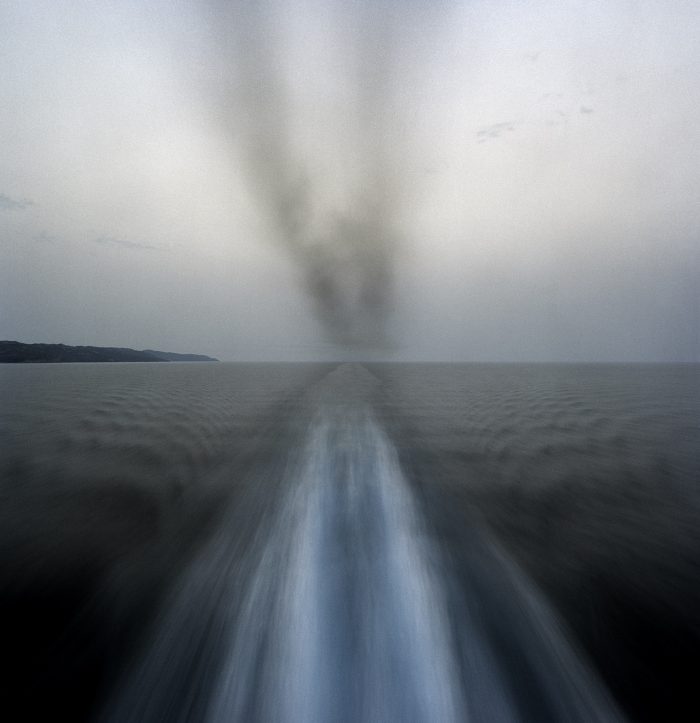Archipelago
Stratos Kalafatis
2023 — Greece
About this series
Work on Archipelago began following a commission from the Greek curators of the 10th Venice Biennale of Architecture. Katerina Kotzia, Elias Constantopoulos, Lois Papadopoulos and Korina Filoxenidou, backed up by the historian Ruggiero Romano’s heretical conviction that the Aegean Archipelago is a city, proposed the idea as the central axis of the Greek participation.
Working with the outstanding photographer and friend, Spyros Staveris, we set about rendering the theme of the aquatic city in visual terms. I undertook to photograph its ships and the routes they plied, while Spyros documented the human element as it flooded the islands in the Aegean summer. The resulting images were first shown in September 2006 at the Greek pavilion in the Giardini, Venice.
I made the sea’s acquaintance through the sound of it. Rough and rhythmic, it reached me in my room on childhood evenings. Its image so utterly present, it almost escaped me, merging with the Kalamitsa hills in a landscape as much a given for me as the act of breathing.
My grandfather, a sailor all his life, could never get over his captain’s strict and capricious ways. He spoke to me of voyages and of adventures, trained me in the secrets and rules of the sea. And the summers went by like that, with me barefoot, tanned and happy, adopted by the sea.
Later, we’d spent four years on the island of Skopelos, Lia, little Daphne and me. There, encircled by the sea, I felt how free the water makes you feel, and how unbearably cut off.
I embarked on my Archipelago voyage from my home town one afternoon in early summer. Kavala, the Aegean’s most northerly port, was the ideal point of departure, but more significantly still, it was the city I grew up in, where I came to know the sea. Embossed with layers of salt and paint, I knew the ship from the travels of my youth. We left the land behind. Black smoke reached out to the horizon until it was lost to the night. I stayed on deck struggling to patch together a memory from the lines, the wake foam, the distant lights. We reached Limnos. The red lights on the jetty and the sound of the descending ramp were my first photographs of the Archipelago; there would be a lot more to come on the twenty days of my mini-odyssey.
Today, ten years on, in the light of this volume, I picked up my camera and returned to the Aegean. For the new journey, unchanged yet very different, that brings my tale to an end. The charred lifeboat and the solitary flag the final gestures of a present which, too, will one day sink without trace into the depths of time.
Photographer: Stratos Klafatis
Nationality: Greek
Based in: Greece
Website: www.stratoskalafatis.com
Instagram: @stratoskalafatis
Stratos Kalafatis was born in Kavala in 1966.
He graduated from the Physical Education and Athletics department of the Aristotle University of Thessaloniki and then he attended photography classes at the Art Institute of Philadelphia, U.S.A. He lives in Thessaloniki and has created, along with Lia Nalbantidou, STUDIOTESSERA, a photography platform with educational, publishing and artistic activities. During the last thirty years, he has been presenting his photographic works at private galleries, museums, festivals and artistic events throughout the world.
The following works of his are available from Agra publications: Archetypal Images(1999), , Journal 1998-2002 (2004), Athos / The colours of faith (1st edition2014), (2nd edition 2018), Archipelago (2017). He is represented by the Bernier / Eliades gallery.


